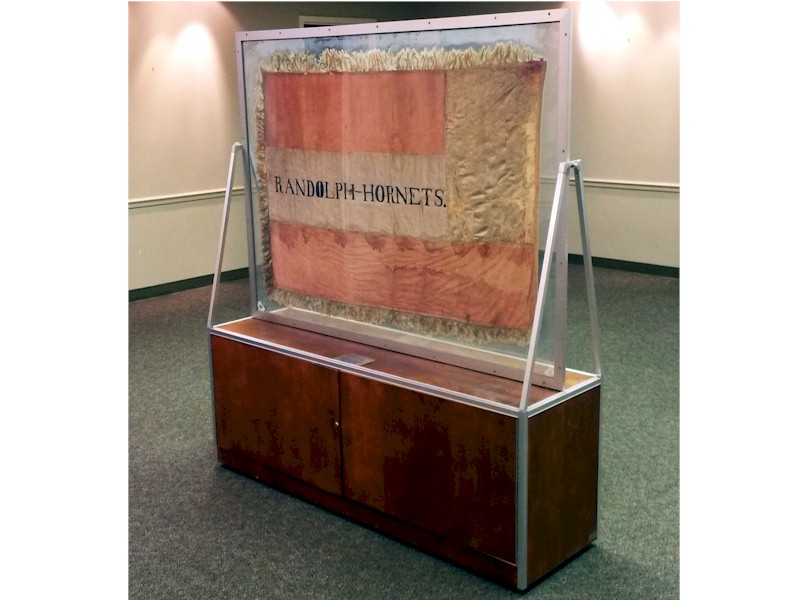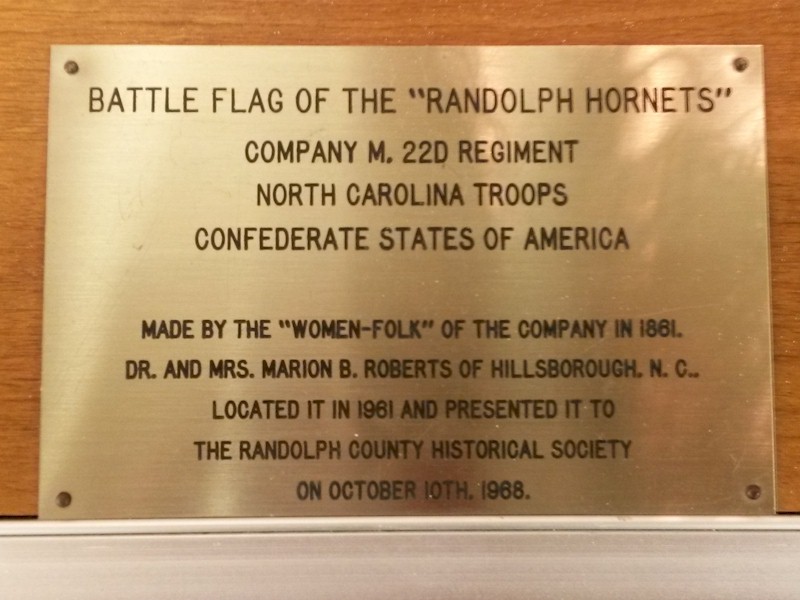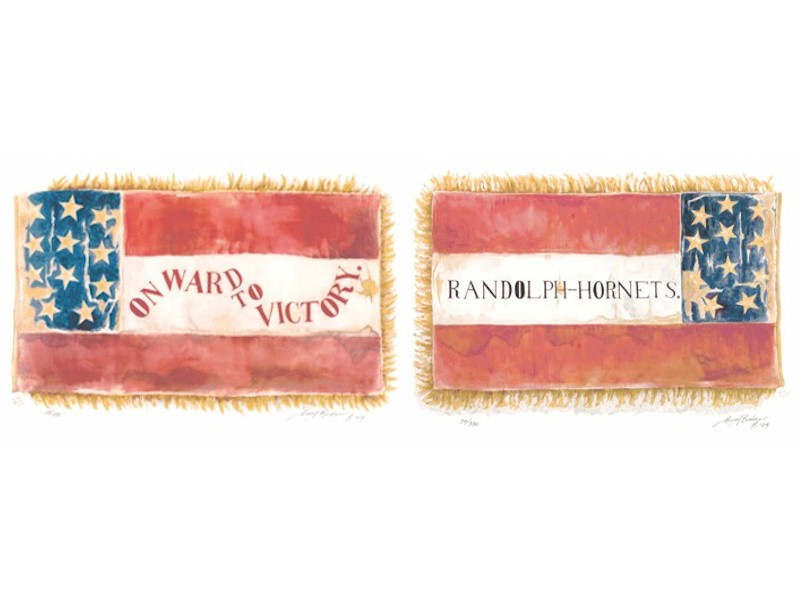





Read the Cultural Heritage Object Designation
Read the Cultural Heritage Object Resolution
"Randolph Hornets" was the nickname of Company M, 22nd North Carolina Infantry of the Confederate army during the Civil War. The company was a Randolph County militia unit until mustered into Confederate service in 1861, and was composed of men who lived principally in the eastern section of Randolph County, mainly the Liberty and Staley communities. Their flag is believed to have been made locally by the families of the men in the company. Originally the colors must have been red, white and blue. Many delicate stitches, the evidence of nimble handi-work, are plainly visible. The thirteen gold stars designating the original Confederate states are mounted on a background of blue. On one side, outlined in India, ink, are the letters "Randolph Hornets." The reverse side bears the appliqued motto "Onward to Victory." The flag was captured by United States forces on March 9, 1862 along the Potomac River, left behind when Company M and fellow units quickly abandoned their positions as federal troops stormed ashore from gunboats. A United States soldier, Oliver C. Cooper of the 1st Massachusetts Infantry, described the scene: "Two handsome banners were obtained in one of the camps – one, of silk, having belonged to an Arkansas company and the other, of satin, bearing on one side the inscription, 'The Randolph Hornet's,' and on the other, 'Onward to Victory.' A building was found containing fifteen or twenty ready-made pine coffins, and the numerous graveyards, filled with fresh graves, which were met with, showed that sickness and death had been busy in the Confederate Camps during the winter."
In 1961, Dr. and Mrs. Marion B. Roberts of Hillsborough learned of the flag while visiting friends in Pennsylvania, and discovered that it was in the hands of a person in Connecticut. Through a labyrinthine path of contacts, Roberts acquired the flag and donated it to the Randolph County Historical Society, which commissioned a case for it and placed it on display in the Randolph Room of the Randolph County Public Library.